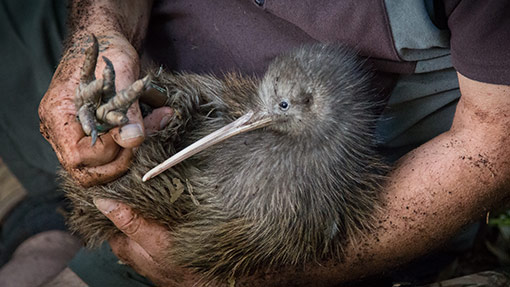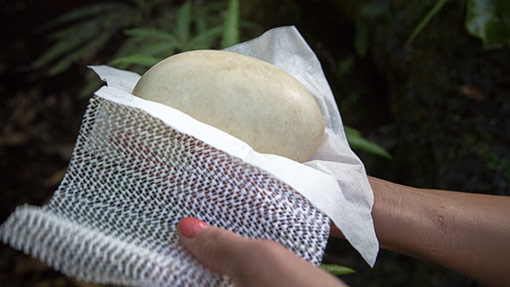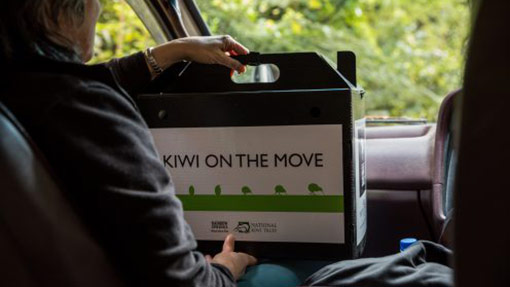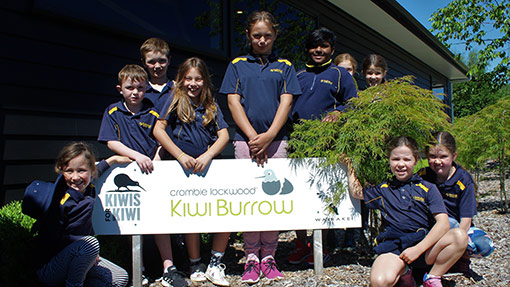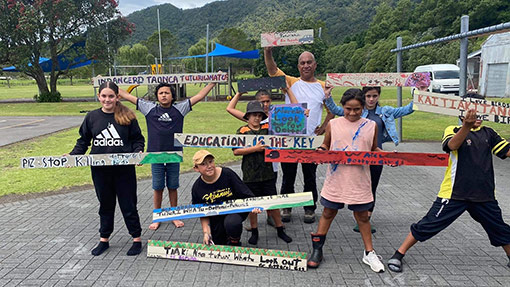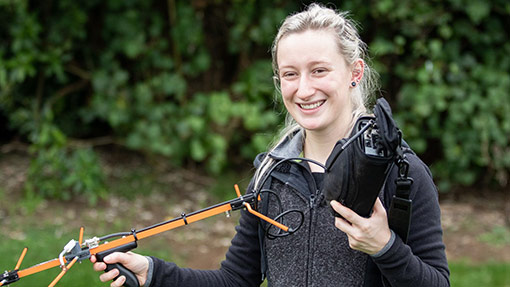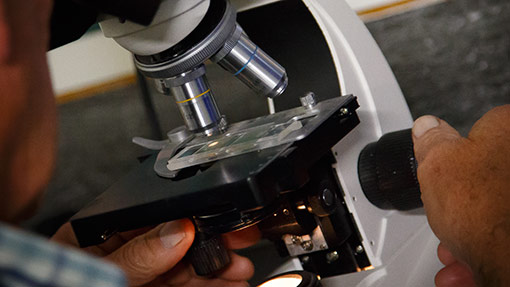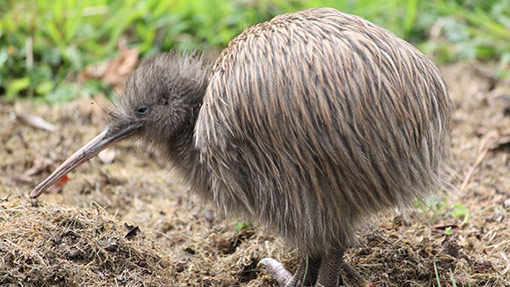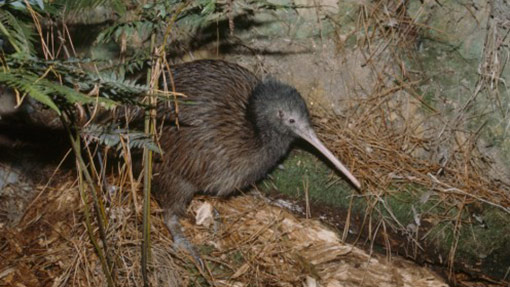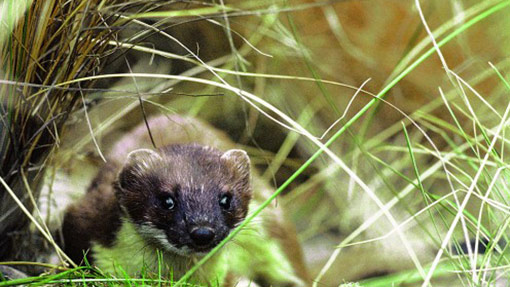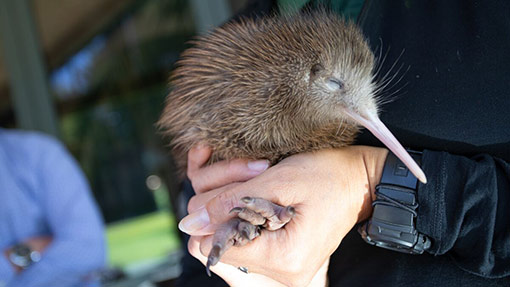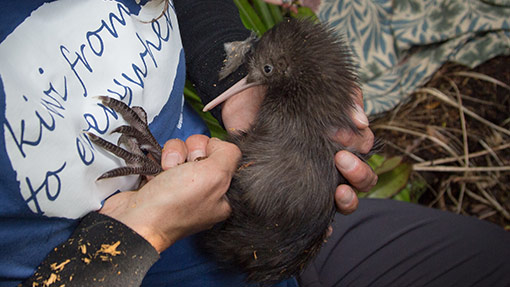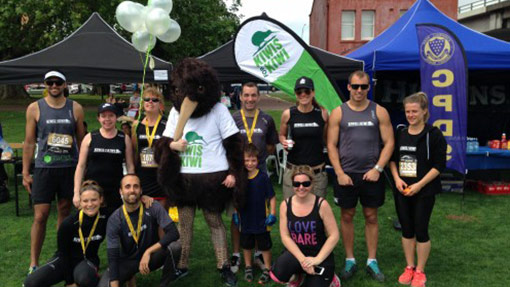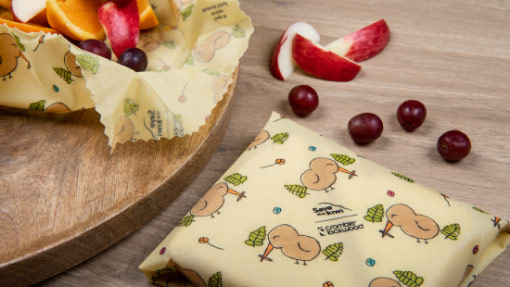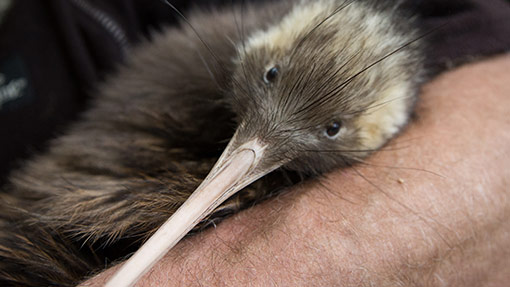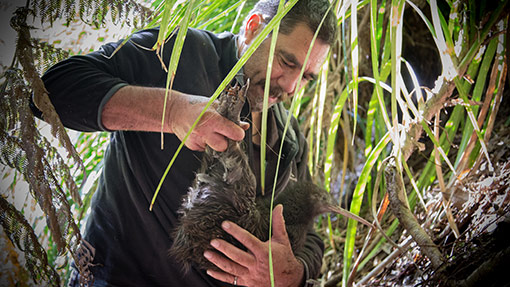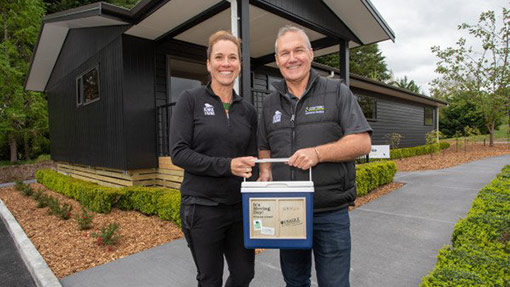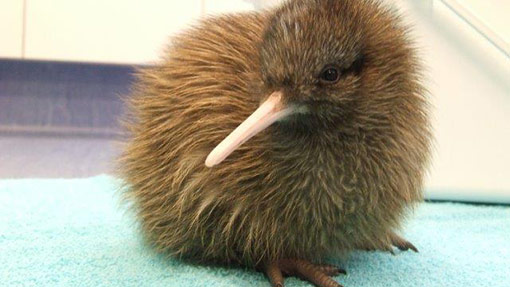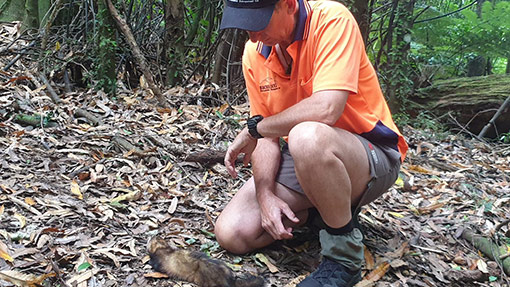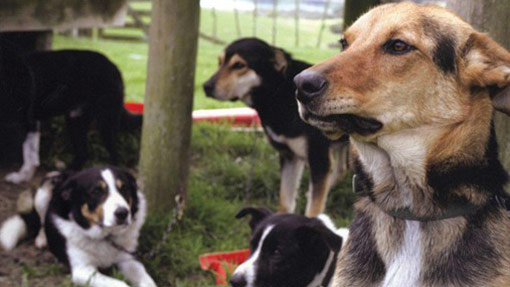The National Kiwi Trust operates Kiwi Encounter onsite at Rainbow Springs in Rotorua. The facility is purpose built for incubation, hatching and raising of kiwi chicks. This funding is to support their usual operations and can be used in whichever they deem most appropriate and beneficial.
Pūkaha is a 942ha reserve located at the Northern boundary of the Wairarapa Region. The Forest Restoration programme covers both the 942ha reserve as well as the surrounding 2,600ha of neighboring farmland. Operated as a partnership between local iwi, DOC & the Pūkaha Mount Bruce Board. This funding is to support their continued conservation efforts. We appreciate the support and willingness to work with Kiwis for kiwi.
Wildbase Hospital has partnered with DOC and NGOs for many years to provide veterinary support for the conservation of threatened New Zealand birds, reptiles and mammals. This funding is to support the great service you give community groups
The National Kiwi Trust operates Kiwi Encounter onsite at Rainbow Springs in Rotorua. The facility is purpose built for incubation, hatching and raising of kiwi chicks. This funding is to support their usual operations and can be used in whichever they deem most appropriate and beneficial.
Whenuakite Kiwi Care Group has been operating since the year 2000 on 2600 ha of private land and 930 ha of Public Conservation land. Undertaking predator control targeting all introduced predators. Funding provided this year will support a operations manager, track maintenance and their Call Count Monitoring programme
Moehau Environment Group undertakes landscape-scale mustelid trapping in 9,910ha of kiwi habitat, primarily on private land. The funding provided this year is to support the project
Mahakirau Forest Estate (MFE) is an Internationally Significant Natural Area strategically located near the IUCN I rated Manaia Forest Sanctuary. It is home to several species of highly threatened fauna including internationally identified conservation priorities including Archey's frog; the newly discovered Coromandel Striped gecko; and the almost extinct Helm's butterfly.
The core area of the project includes two Significant Natural Areas ranking of national importance by the Waikato Regional Council. A predator control contractor services 250 stoat traps and 80 bait stations in the area plus maintains the tracks covering a trapping footprint of over 3,000 hectares of steep regenerating and mature native forest. The funding is to support their predator control
Thames Coast Kiwi Care works in partnership with private land owners and DOC to oversee an extensive trapping program targeting mustelids for kiwi protection along the Thames Coast and inwards towards the central Coromandel range. This funding is to support the non-Operation Nest Egg components of their project, including predator control, administration and Health and Safety
The Maungataniwha Kiwi Project commenced in 2006. It has produced over 320 juvenile kiwi for release. Currently over 200 of these have been returned to the Maungataniwha Native Forest. Pair numbers have risen from 60-65 pair to around 120 pair. Funding this year is to support their continued monitoring of kiwi in the project
ECOED is the largest community led conservation project in Hawke's Bay, encompassing 15000ha of mountain beech forest as well as 40ha of predator-free creche site. Annual volunteer contribution exceeds 4200 hours. This funding is to support predator control
The Whakatāne Kiwi Trust promotes, supports and manages community based biodiversity projects in the Whakatāne area to facilitate the growth of sustainable populations of kiwi and other indigenous species. The funding is to support the kiwi avoidance training, admin support and to review their management support.
Omataroa occupies a 7,777 ha area consisting of approximately 7100 ha of exotic production forest, and a further 546 hectares of indigenous forest. It is Maori Trust land with 7000 shareholders. This funding is to support their kiwi conservation programme.
The Whinray Eco Trust has been managing Eastern North Island brown kiwi within the Motu Ecological District since 1999, both within the Whinray Scenic Reserve and on private farmland. During this time the Whinray kiwi population has increased from approximately 8 individuals in 1999 to c.30 breeding pairs in 2019. This funding is to support their kiwi conservation work
This funding is to support a short term, research initiative to compare the fitness of Operation Nest Egg creched chicks vs those hatched naturally in the sanctuary.
The long term goal of Paparoa Wildlife Trust is to increase the roroa great spotted kiwi population in the Southern Paparoa Ranges through a combination of O.N.E and predator control. This funding is to support their call count survey.
Support of research to undertake occupancy modelling of the roroa distribution data - Understand confidence in non-detects and the determinants for the roroa distribution - Publish the results of the occupancy modelling and the roroa distribution in a peer-reviewed scientific journal
Iwi kiwi aims to coordinate all efforts to help kiwis within our area of action and to provide a vehicle for funding and economic and social development. This funding is to support their pest control
Puketotara Kiwicare Group began in 2012 covering 1800 ha, it is now known Kerikeri-Puketotara Catchment CPCA covering a total 5,743 ha. They provide an Integrated Pest Management Plan to protect an estimated 280-300 kiwi. This funding is to support their trapping programme
Three community-led Northland brown kiwi strongholds (WHLF -Backyard Kiwi, Tutukaka Landcare Coalition, and the Bream Head Conservation Trust) continue to work together to coordinate a joint ONE programme. This funding is to support their Operation Nest Egg programme.
Matakohe-Limestone Island is a 38 hectare restoration island located in the upper Whangarei Harbour. Te Parawhau have mana whenua over the island It has been managed as a community project by the Friends of Matakohe - Limestone Island Society (FOMLI) for over 20 years, and been a kiwi creche for over 10 year. The funding is for trap maintenance, kiwi transfers, bait, buffer trapping and for buffer trapping boat costs.
Kiwi Life is an iwi/community-led collaborative initiative with the aim of establishing a financially self-sustaining environmental/cultural education facility and restoration venture to inspire a greater connection to biodiversity through educational experiences to raise awareness of social, cultural and ecological values of kiwi and other taonga.
This funding is to support Hupara District Landcare Group Incorporated's predator control work.
Tawapou is a 124ha property been in the family since the mid 1960’s. Some fenced for nearly 50 years. 94% is covenanted with QEII. With pest control carried out over 35 years. The funding is for avoidance training
The Sandy Bay Kiwi project has grown from a predator control project (2005) within an initial cluster of QEII covenants to a wider landscape scale project within the Sandy Bay catchment and hinterland(c. 640ha). The funding is to support their trap costs and avoidance training
MRHLG is a registered charity manages 1133.22 ha of private & public land in 3 Scenic Reserves. The goals of the group are 1)to restore, protect and enhance the habitat of native birds (especially Kiwi & Kukupa), plants & animals through control/elimination of predatory & introduced plants & animals 2)to raise community awareness & enlist their help in sustainable management of the land & rare and endangered species.This funding is to support their predator control work.
Kowhairoa Peninsula was returned to Iwi after almost a hundred years, this has now provided the opportunity of Kaitangata Haupu to practice their role of Kaitiakitanga as our tupuna had, during this time frame has seen the infiltration of introduced predators and pests that have ravaged and decimated the indigneous flora and fauna. Our long term goal is to 'Establish a predator free main land island sanctuary'. secondly,this will enable the trust to translocate absent species both flora and fauna. This funding is to support part of their predator control work
By widespread pest and predator control, community engagement and education and volunteer efforts, Waimate North Landcare Trust strives to promote and facilitate the preservation of all classes of natural ecosystems in an area of 9400 ha located in the Waitangi River catchment in the Bay of Islands. This funding is to support their trapping programme.
Kaipara Forest Conservation Trust was set up initially to control pest species in the Southern Houto Forest and then to expand into the Northern Houto Forest. However pre trapping monitoring discovered a previously unknown small remnant population of kiwi within both forests and on surrounding farmland. This funding is to support their predator control programme.
The Honeymoon Valley Landcare trust plans to extend its integrated predator management program from 500 ha to 2800 ha of the significant natural areas at the headwaters of the Peria river (of which 272 ha is QEII covenanted). This funding is to assist with their predator control, specifically to fund their trapper.
Russell Peninsula is a stronghold of kiwi and NI weka. Our long-term goal is 500 pairs of kiwi breeding on the 3400ha peninsula. In 2015 Russell Kiwi Protection (RKP) was initiated to protect kiwi on private and public land. Currently, we and another contractor control stoats on 2000ha. This funding is to support their trapping programme.
Whananaki has established itself as a successful recovery and signification breeding of Pateke from 2003 to present day. In 2015 we identified two remnant Kiwi breeding areas with in our district. The Landcare group was set up with buy in from land owners with the express purpose to protect and enhance this Area & Kiwi population build on the Pateke work. This funding is to support their predator control programme.
This funding is to support the monitoring of kiwi on their project.
In the 13.5 years since the Puketi Forest Trust was established they have set up ten trap-lines to control stoats and feral cats on 5,500 hectares in Puketi Forest and one in the 82 hectare Puketi Scenic Reserve. This funding is to support their predator control programme.
Pukenui Forest Trust formed in 2008 has a long term goal aiming to restore and enhance the Pukenui/ Western Hills Forest area. This is being achieved with various predator control methods including trap networks for the control of mustelids and feral cats, toxin networks for the control of possums and rats, weed control and the hunting of goats/pigs which have been removed entirely from the forest. Species reintroduction's began in 2018 with the first translocation of North Island brown kiwi into the forest. This funding is to support your predator control work
The Wekaweka Landcare Group has previously maintained 2 core areas which support kiwi (200 ha each) in the upper reaches of the Waimamaku river catchment. This funding is to support their predator control work.
Iwi kiwi aims to coordinate all efforts to help kiwis within our area of action and to provide a vehicle for funding and economic and social development. This funding is to support their pest control
Taupo Bay Land and Coastal group started in Nov 2017. The group started because Taupo Bay has a remnant population of Kiwi and also nesting Dotterels . There was no control of cats and stoats in this area prior to 2017. This funding is to support their trapper costs.
This funding is to support research to simultaneously investigate individual and collective vocal behaviour and activity of Kiwi on Ponui Island using DOC autonomous recording units (ARUs) and micro-recorders enclosed in the birds’ radio-transmitters. This will allow to obtain estimations of population densities from Kiwi Call Counts and prime the use of ARUs for monitoring, a significant improvement in conservation efforts.
Shakespear Open Sanctuary is NZ's most visited and accessible wildlife sanctuary. A community partnership between Shakespear Open Sanctuary Society and Auckland Council along with NZ Defence Force, Watercare Services and YMCA. The funding is to contribute to completing the translocation of little spotted kiwi to Shakespeare Open Sanctuary.
This funding is to support Stewart Island Rakiura Community & Environment Trust's predator control work.
East Taranaki Environment Trust aims to work towards a long term vision of 1,000 pair by 2020. Their landscape size project has 13,000 hectares under predator control, with a network of 1300 DOC-200 traps. This funding is to contribute to the predator control for their project.
This funding is to support the employment of kiwi ranger.
This funding is to support their project coordinator.
The Tiaki te Mauri O Parininihi Trust has been established to guide and manage the protection of land that was returned to Ngati Tama Iwi (tangata whenua/kaitiaki of Parininihi) in North Taranaki as part of the treaty settlement with the Crown in 2003. This is the only iwi-led conservation project of its kind in Taranaki with the aim to fully protect the 1867 hectare area of rich coastal forest at Parininihi. This funding is to support their trapping programme.
